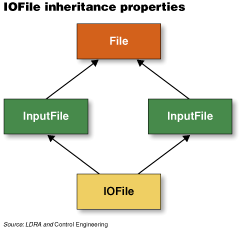Software development often proves far more expensive than expected. Evidence indicates that the earlier a defect is discovered in development, the less impact it has on both the timescales and cost. Bugs discovered late

The typical software development life-cycle follows the familiar waterfall process.
in the development cycle send costs soaring and risk the integrity and safety of a system, especially if the software has been deployed. Obviouslywww.cechina.cn, careful planningCONTROL ENGINEERING China版权所有, organization,
Since its inception in the early 1970s, the sequential waterfall model has served as a framework for software development alternatives. In this model, each phase cascades to the next, which only starts when the defined goals for the previous phase are achieved.
In practice, earlier phases often need to be revisited as developers work iteratively and requirements come together as users test prototype versions of the system. Because of this iterative approach, it is even more important to apply suitable verification and validation (V&V) techniques at each stage and within each iteration.
Requirements
The first step or level in the waterfall model is developing system requirements. This step involves close collaboration between the ultimate user and the development team. There is much to gain by ensuring requirements are captured in full, are well understood, and are specified completely and unambiguously. Formal methods of tracking requirements are based on a mathematical approach to specification, development, and verification of software and hardware systems.

The derived classwww.cechina.cn, IOFile控制工程网版权所有, inherits attributes from both InputFile and OutputFileCONTROL ENGINEERING China版权所有, which both inherit from File.
These formal methods can vary from using commonly accepted notation to the full formality of theorem proving or automated deduction—a method of proving mathematical theorems by a computer program. Although the cost of using formal methods often limit


 在线会议
在线会议 论坛
论坛 专题
专题 工控直播
工控直播 新闻中心
新闻中心 子站
子站 技术
技术 社区
社区



 IDEC HR8S系列新一代安全继电器有奖试用活动
IDEC HR8S系列新一代安全继电器有奖试用活动 2025(第二十一届)年度最佳产品奖有奖投票中
2025(第二十一届)年度最佳产品奖有奖投票中 AVEVA剑维软件食品饮料行业白皮书有奖下载
AVEVA剑维软件食品饮料行业白皮书有奖下载 立即有奖下载TE重载连接器选型指南
立即有奖下载TE重载连接器选型指南 2025(第十四届)全球自动化和制造主题峰会
2025(第十四届)全球自动化和制造主题峰会




























